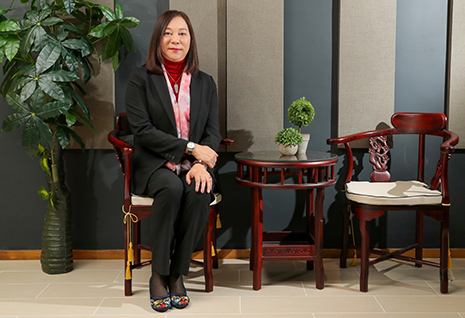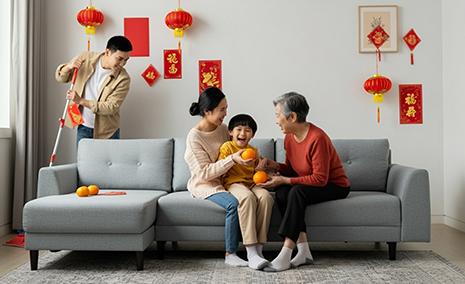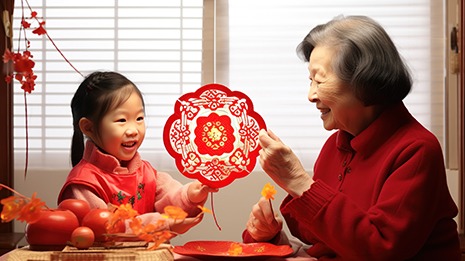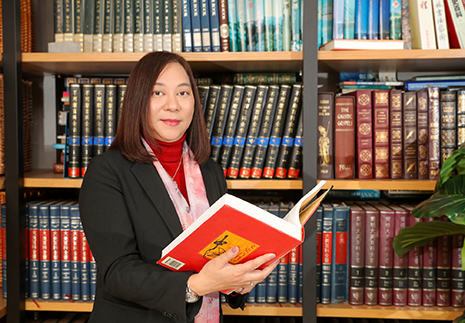Chinese New Year Traditions: A Celebration of Family, Culture, and Virtues
The Chinese New Year, also known as the Spring Festival, is much more than the most important festival for the Chinese—it is a profound cultural phenomenon that embodies the values of family, unity, and tradition. “Spring Festival - social practices of the Chinese people in celebration of traditional new year” was inscribed on the UNESCO’s Representative List of the Intangible Cultural Heritage of Humanity on 4 December 2024, the festival holds immense significance in Chinese culture. Dr Pang Shuk-Man, Assistant Professor & Associate Head of the Department of History at the Hong Kong Shue Yan University, and a member of the Intangible Cultural Heritage Advisory Committee, explains that traditional Chinese society revolves around the family. As the dawn of a new year, the Chinese New Year fosters closer familial bonds through a rich tapestry of customs. For many, welcoming the new year surrounded by loved ones symbolises harmony and completeness. Each Chinese New Year custom is a tribute to the importance of family unity, interwoven with values of respect for elders, care for family members, and harmony, ensuring that traditions are lovingly passed down through generations. Below, we explore these time-honoured practices, as well as family values and ethics, that remain at the heart of Chinese culture.

Dr Pang Shuk-Man, Assistant Professor & Associate Head of the Department of History at the Hong Kong Shue Yan University, and a member of the Intangible Cultural Heritage Advisory Committee
1. Spring Cleaning
“Of all festivals, the Chinese New Year takes precedence; of all seasons, spring leads the way." Although the festival is the inaugural celebration of the year, it encompasses the transition from the old year to the new. One of the most significant pre-festival traditions is the spring cleaning. Dr Pang highlights a Qing dynasty folk rhyme, “On the twenty-seventh, cleanse away the illness; on the twenty-eighth, leave no dirt behind.” This ritual is not merely practical but deeply symbolic, representing the purging of the old to make way for new beginnings. It also embodies a heartfelt wish for health, prosperity, and harmony in the coming year—a demonstration of care and protection for the loved ones.

2. Hanging Huichun (Spring Scrolls)
Hanging huichun is a vibrant tradition that dates back to the Spring and Autumn and Warring States Periods. This practice typically takes place after the spring cleaning. Dr Pang explained that the earliest huichuns, known as "peach charms," were carved from wood and believed to have protective powers against evil spirits and misfortune. Today, the tradition is a cherished family activity, accompanied by auspicious words of blessing, wishing for good luck and prosperity for the household. Written with phrases symbolising good fortune, each huichun carries heartfelt wishes for the year ahead, with phrases such as "Five generations under one roof" or "Prosperity and abundance", symbolising hopes for prosperity and unity. This enduring custom, celebrated for its artistic and cultural significance, has even been included in Hong Kong's Intangible Cultural Heritage Inventory under the "Social Practices, Rituals, and Festive Events" category.

3. Reunion Dinner on the Chinese New Year’s Eve
No Spring Festival is complete without the reunion dinner, a feast that embodies family togetherness. Traditionally held on the Chinese New Year’s Eve, it is a time when loved ones gather, regardless of distance, to share a meal and rekindle bonds. Dr Pang explained that before dining, families traditionally pay tribute to the heaven, the earth, and their ancestors, expressing gratitude and respect. The meal itself is rich in symbolism, with the round dining table symbolising unity and dishes chosen for their auspicious meanings: whole fish for abundance, pork knuckles for prosperity, and black moss for wealth. As elders begin the meal, the younger family members offer heartfelt blessings, a beautiful gesture that embodies the reverence for family ethics and respect. Even in today’s fast-paced world, the reunion dinner remains deeply treasured. Parents go to the market early to prepare a feast, and some companies allow employees to get off work early to join their families. The reunion dinner is more than a feast—it is a heartfelt expression of love and family unity.
4. Staying Up on the Chinese New Year’s Eve
In ancient times, families would stay awake through the Chinese New Year’s Eve, lighting symbolic "New Year candles" until dawn to pray for hope and good fortune. Dr Pang noted that this tradition predates the Tang dynasty and was believed to protect the household from evil spirits, bring peace to the family, and ensure parents’ health and longevity. While few families today observe the practice in its original form, its essence endures. Modern celebrations often see families gathering to watch television, play mahjong, visit Chinese New Year fairs, or enjoy midnight movies. Though the cultural significance may have evolved, the tradition continues to bring families together in joy and companionship.
5. Lucky Money
On New Year’s Eve, elders give younger family members lucky money, a beloved tradition that symbolises care, blessings, and protection. Dr Pang explained that this custom dates back to the Qing dynasty when elders string copper coins into shapes such as swords or dragons with colorful threads as gifts for children. Since the pronunciation of "year" (歲) is similar to that of "evil spirits" (祟), the lucky money symbolises warding off evil and misfortune, while bestowing blessings for the recipient’s safety, prosperity and success. Today, the tradition remains a cherished way for elders to express familial affection and support.

6. New Year Greetings and Giving Lai-see
New Year greetings are a heartfelt way for younger generations to show respect and gratitude to their elders. Dr Pang noted that this practice has roots in the Han dynasty, where juniors would visit their seniors on the first day of the year, offering blessings and gifts. Sometimes, this included kneeling and serving tea—a touching expression of respect. Elders, in turn, would distribute lai-see, symbolising their blessings and goodwill. The greetings start with the eldest relatives, reflecting familial hierarchy. Married individuals would give lai-see to unmarried family members, symbolising their role as family pillars and sharing their blessings. Dr Pang noted that in modern times, the practice has been simplified, with group visits replacing house-to-house greetings, and kneeling being no longer required. However, the core values of respect, care, and connection remain unchanged, and inter-generational relationships have now become closer.

The Chinese New Year is a celebration of heritage, family, and virtue. Its customs, though adapted over time, continue to preserve the values of respect for elders, love for the family, and unity. As we embrace the festivities, let us take a moment to reflect on the deeper cultural meaning behind these traditions, ensuring that the timeless spirit of the Chinese New Year Festival lives on in generations to come.